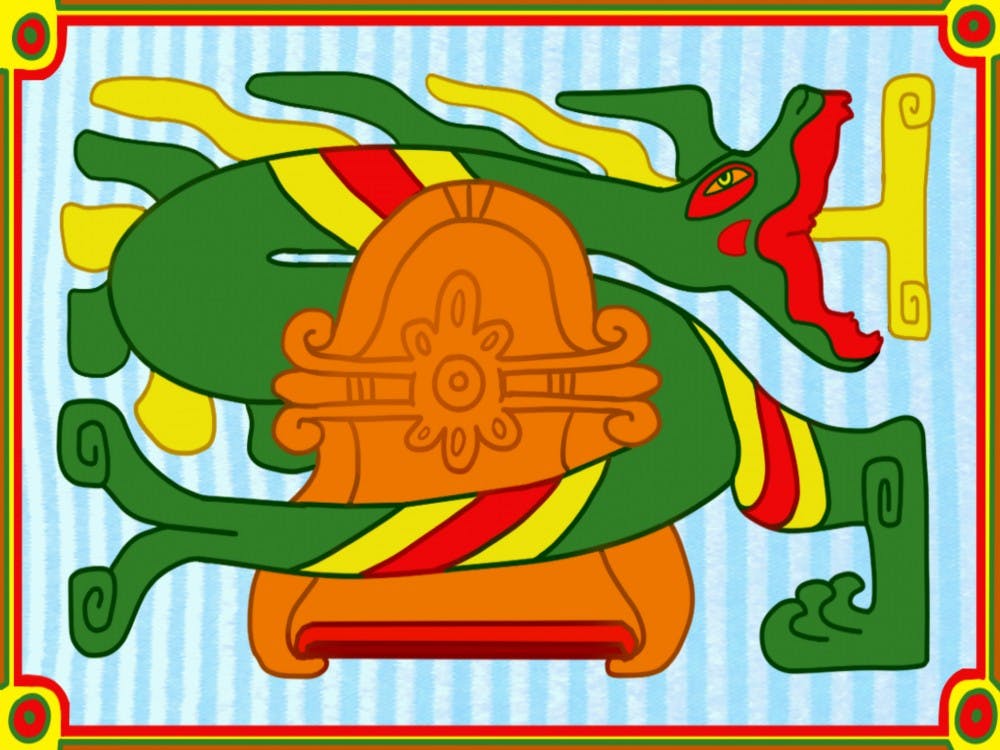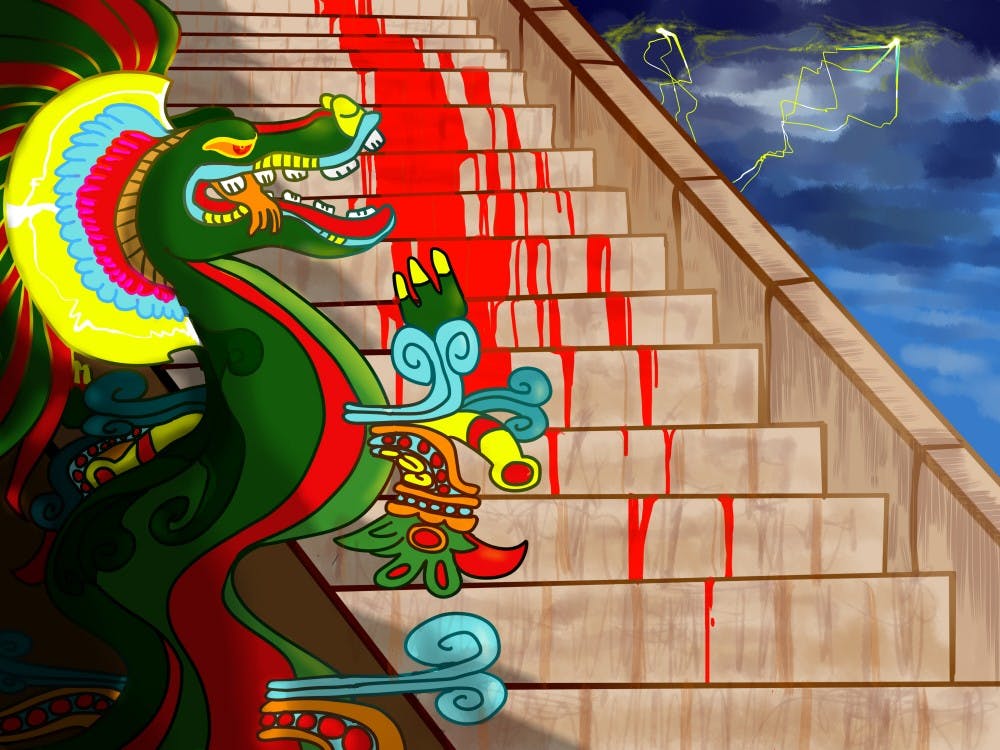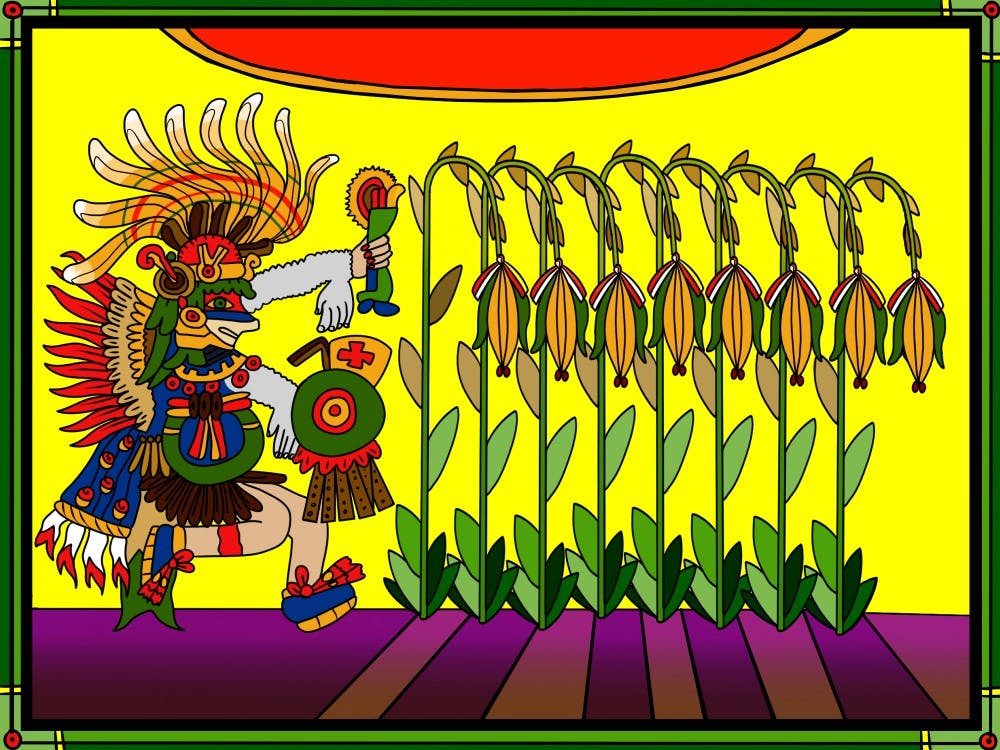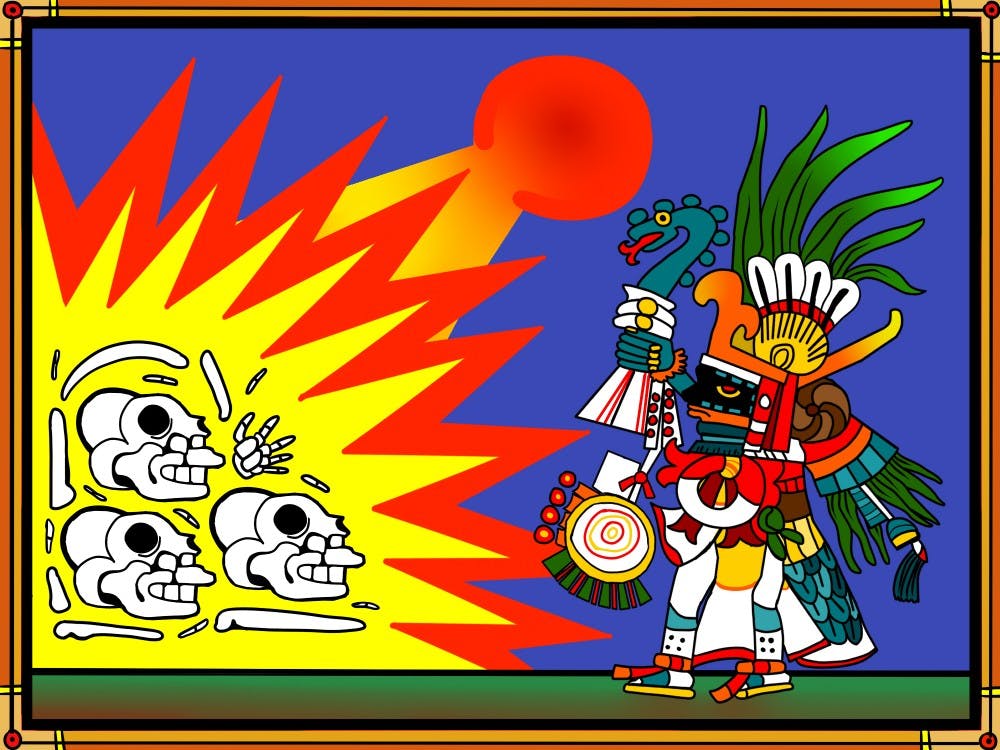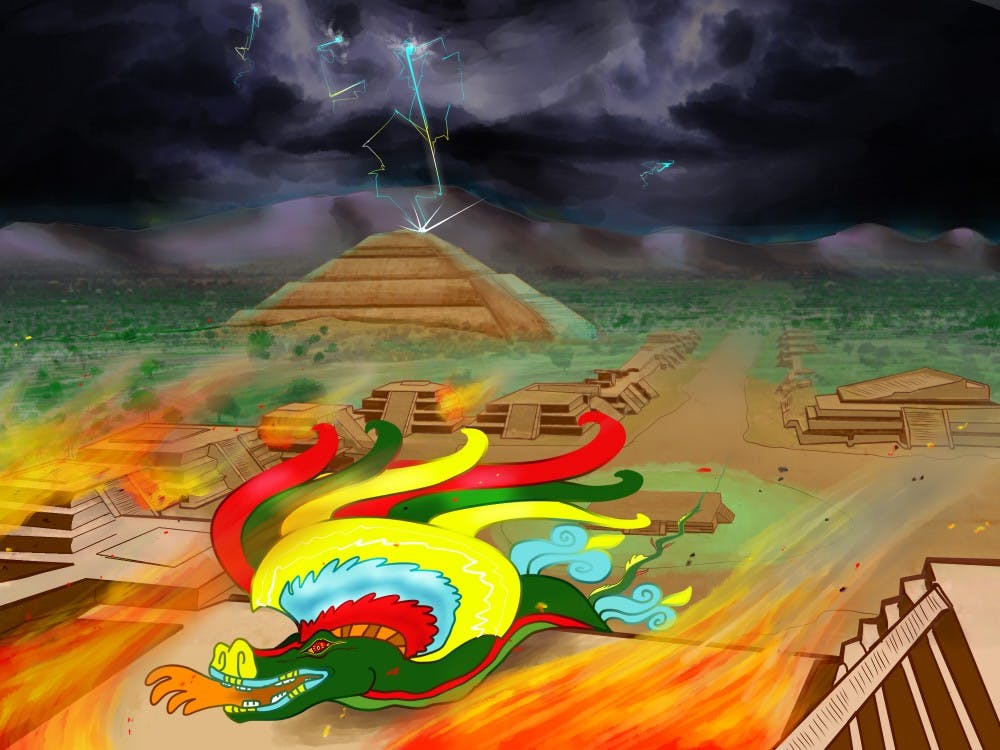If a Teotihuacano were to be sacrificed, he would always be proud to be of service, to repay the debt owed. But that time is no longer.
Hundreds of years before the term ‘revolution’ came to mean anything in the West, a resentful mass of Teotihuacanos, probably led by some insurgent faction, burned and likely murdered much of the ruling theocratic class. This is thought to be the hard-stop end of the era in which Teotihuacan dominated the mid-region of Mexico.
Above is Mictlantecuhtli, the most prominent Aztec god of the dead, who likely had an analogous predecessor in the earlier Teotihuacan pantheon. One can imagine how Mictlantecuhtli might have been in the front of the people’s minds at Teotihuacan in desperate, or even apocalyptic, times.
The Teotihuacan people, and the Aztecs after them, believed sacrifices were a form of payment to the gods, in exchange for them continuing to uphold the cosmic order of the world. An important day-to-day concern was rainfall, as irregular rain patterns could occasionally result in drought. This may have been seen as punishment for insufficient payment, though the details of the Teotihuacan peoples’ spiritual beliefs are highly speculative.
Reach the reporter at parkermshea97@gmail.com or follow @laconicshamanic on Twitter.
Reach the illustrator at mpennisi@asu.edu or follow @madisonpennisi on Twitter.
Like The State Press on Facebook and follow @statepress on Twitter.
